Acute. Later, geriatric, acute (Out-Patients only)
By the end of the 1920s the Brentwood District Hospital in Shenley Common had become too small for the increasing population of Brentwood, and plans were made to rebuild it to a larger specification.
During the early 1930s a colossal effort was made to raise about £40,000 for the rebuilding. Fund-raising was spearheaded by Mr Frederick Jackson, a local businessmen who ran Lush & Cooks, the laundry and dry-cleaners. A local landowner, Mr Percy Bayman of Shenfield Place, who considered the current Shenfield Common site would be too small for a larger building, donated a 20-acre site in Crescent Drive, formerly part of Middleton Hall, for the hew hospital.The foundation stone was laid in May 1933 by the Princess Royal (Princess Mary) and the building work was undertaken by 60 local workmen who had been previously unemployed. Considerable efforts were made to raise the final total of £38,000 and the building was completed in March 1934.
The Hospital was officially opened in May 1934 by Princess Helena Victoria, one of Queen Victoria's grand-daughters. The Hospital had 40 beds and had been planned so that wings could be added later at the rear, increasing the patients accommodation to 100 beds (the extensions were never built).
The main building was built of red brick and faced the road. It housed the administrative offices on the ground floor, with staff accommodation on the two storeys above. It ran from east to west, with a 2-storey ward block projecting south from its rear elevaton. This contained large 12-bedded wards - males on the ground floor and females on the first floor. The wards were set out in an unusual 'T'-shaped plan which reduced the length of the ward and enabled the beds to be set parallel to the windows, maximising the use of sunlight. Beds were separated by glass screens and could be curtained off easily and converted into individual cubicles. The children's ward was on the first floor of the west wing, which had a solarium for open-air treatment of tuberculosis and other respiratory diseases. Single-storey wings extended north from either end of the main building and housed the accident ward, the operating theatre and the kitchens.
A small yellow brick chapel was built on the eastern part of the site.
The gardens behind the Hospital mainly contained varied trees, as well as some exotic shrubs. A small wooden 'chalet' was built in the grounds for patients with tuberculosis to be able to enjoy the open air in all weathers.
In 1937 John Logie Baird visited the Hospital and presented it with a television set (unfortunately in the same year his transmission system was abandoned by the BBC in favour of the one developed by Marconi-EMI).
The Hospital joined the NHS in 1948 under the control of the North East Metropolitan Regional Hospital Board. It had 50 beds.Bed accommodation was later increased when a 3-storey 4-bay extension in the same architectural style was built at the southern end. A pre-fabricated extension was added at the rear of the site, as well as two gable-ended wooden buildings. A boiler room and a porter's office were built onto the east wing and a 2-storey flat-roofed extension added to the rear of the wing.
Following reorganisation of the NHS in 1974, when the Hospital had 62 beds, the surgical beds closed.
By 1990 it had 26 beds for geriatric patients only, but the Out-Patients Department continued to function.
The wards closed in 2000 and the Hospital continued to operate as an out-patient facility until 2005, when it finally closed.
Present status (September 2008)
The Billericay, Brentwood & Wickford Primary Care Trust, established in 2001, considered the Hospital buildings to be too old and in too great a state of disrepair to be worth maintaining. They were demolished and the Brentwood Community Hospital has been built on the site.
This 50-bedded '21st century
healthcare
facility' was completed in June 2008. Following yet another NHS
reorganisation, it is now run by the Barking,
Havering and Redbridge University Hospitals NHS Trust.

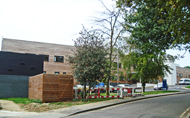
The new Brentwood Community Hospital from the west (left) and from the east (right).
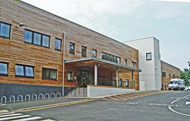
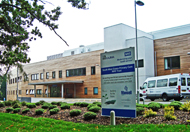
The northern elevation of the new building.
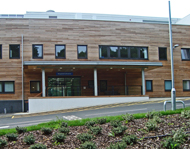
The main entrance.
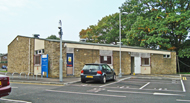
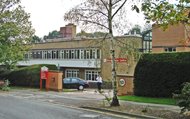
An older building remains on the western part of the site (left). The Blood Transfusion Service is located in Crescent Drive close to the new Hospital (right).
Ward J 2004 Brentwood. A History. Chichester, Phillimore & Co.
http://hospitalshistory.multiply.com (1)
http://hospitalshistory.multiply.com (2)
http://seax.essexcc.gov.uk
http://unlockingessex.essexcc.gov.uk
www.bbc.co.uk
www.brentwoodessex.co.uk
www.british-history.ac.uk
Return to home page